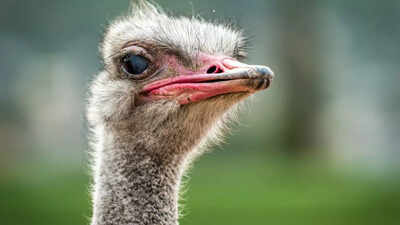ARTICLE AD BOX

Ostriches are the tallest birds in the world, and they live in the grasslands of Africa. They can’t fly, but they can run faster than most land animals. With their long necks, strong legs, and unique feathers, ostriches are built to survive and stand out.They are also excellent at spotting danger from far away, thanks to their sharp eyesight. Their powerful legs not only help them run but also defend themselves if needed. Ostriches are social animals and usually live in groups, which helps them stay safe and find food together.They also have some surprising traits, like laying the largest eggs of any bird. These facts show just how special and interesting ostriches really are.Here are ten things you should know about these amazing birds.Two species, two worlds

There are two main types of ostriches– the Common Ostrich and the Somali Ostrich. The Common Ostrich lives across much of sub-Saharan Africa and is the one most people know. Males have black feathers with white wings and tails, while females are lighter brown. The Somali Ostrich, found in the Horn of Africa, looks a bit different. Males have a bluish-grey neck and legs, and females are paler brown.
Both types share many traits but are suited to slightly different environments.The world’s largest birdOstriches are the biggest birds in the world. They can grow up to about nine feet tall and weigh more than 150 kilograms. Their long legs and neck make them impressive in size. Even though they can’t fly, their strong bodies help them survive in the open grasslands. Their wings, though not for flying, help them balance and change direction while running.The flightless speedsters

Ostriches can’t fly, but they are incredibly fast runners. They can reach speeds of around 70 kilometres per hour, making them the fastest birds on land. Their long legs let them cover several metres in a single stride, helping them escape predators quickly across the savannah.Only two toes per footUnlike most birds, ostriches have only two toes on each foot. This unique feature helps them run faster by giving better grip and reducing drag.
The bigger toe has a thick nail, almost like a hoof, which keeps them steady at high speed.They prefer company

Ostriches are social birds. They usually live in groups called flocks, often about a dozen birds. Groups help them stay safe because more eyes can spot predators. Within a flock, there’s usually a leading male and main female. During breeding season, all the females lay eggs in a single nest guarded by the leading pair. Living together makes finding food and protecting their young easier.A dance to impressMale ostriches perform a big dance to attract a mate. They spread their wings, move their necks in sweeping motions, and step rhythmically on the ground. Their black-and-white feathers look even brighter during this display. If a female is interested, she shows it subtly, and the pair stays together for the season.A strong and clever stomachOstriches eat plants, seeds, insects, and small animals. Their stomach has two parts– one that releases digestive juices and a muscular part that grinds food.
They even swallow small stones that help crush tough food. This way, they can digest everything efficiently, even without teeth.

The biggest eggs in the animal kingdomOstriches lay the largest eggs of any bird. Each egg can weigh around 1.5 kilograms, about as big as two dozen chicken eggs. The thick shell is strong enough to support the bird’s weight. In some parts of Africa, people use empty ostrich eggs as containers or decorate them with carvings.A kick that can defendOstriches look calm, but they can deliver powerful kicks when threatened.
Their long, strong legs have sharp claws, which can hurt large predators. Usually, though, they prefer to run away rather than fight.The truth behind the “head in the sand” mythContrary to popular belief, ostriches do not bury their heads in the sand. When scared and unable to run, they lie flat on the ground with their long neck stretched out. From a distance, it might look like their head is buried, but they are really just trying to hide by blending into the ground.Disclaimer: The details in this article are based on online sources and ecological studies. Information may differ depending on species and region.Images: Canva (for representative purposes only)

 2 hours ago
4
2 hours ago
4









 English (US) ·
English (US) ·